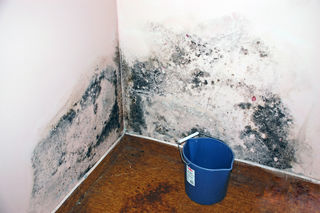Psychiatry
Mold Toxicity: A Common Cause of Psychiatric Symptoms
Could your depression, anxiety, brain fog and insomnia be due to mold toxicity?
Posted August 3, 2017 Reviewed by Kaja Perina

Toxic mold based illness is a very prevalent and under diagnosed condition that can manifest in many different ways, including with symptoms that are exclusively psychiatric, such as depression, anxiety, attentional problems, brain fog and insomnia. Vulnerability to mold toxicity is only present in 25% of the population, who in most cases, have a genetic predisposition which inhibits their clearance of biotoxins. A family can all be living in the same house with mold growth, but only one family member will become ill. This is because that person is the only one with the genetic vulnerability.
Mold growth is initiated through water damage. Due to common building practices of using Drywall or Sheetrock, which was not a construction material used in the past, more people are now being exposed to toxic mold, as Drywall is a great medium for mold growth. In addition, the current practice of making homes more energy efficient, means that there is less ventilation with outside air, and toxic mold gasses can be trapped inside, potentiating their effect.
Mold toxins can accumulate in the body, continuing to wreak havoc long after exposure ceases and require an extended course of treatment. But for everyone, the first and most crucial step in treatment, is to identify where the mold is located and to get away from it.
There are companies that specialize in mold testing and others that offer mold remediation. It is advisable to use different companies for testing and remediation, though some companies do offer both, in order to avoid a conflict of interest.
A more cost effective means of testing is with mold growth plates, which can be purchased from a company called ImmunoLytics. The plates are set out around the house and later collected and sent to the laboratory for analysis. In addition, there is a laboratory test that can identify mycotoxins in the urine.
Mold allergies and mold toxicity are not the same illness. Mold allergies are due to mold spores that are inhaled and cause hay fever like symptoms. This is different than toxic mold, which is due to the volatile toxic vapors produced by mold that can cause a chronic inflammatory response, (CIRS), an auto-immune reaction caused by poor clearance of bio toxins in vulnerable individuals.
Mold toxicity can manifest with so many different and diverse symptoms, that it is frequently misdiagnosed. It is likely that some cases of chronic fatigue, fibromyalgia, mast cell activation disorder, histamine intolerance, irritable bowel and leaky gut, multiple sclerosis and post-treatment Lyme syndrome, which do not respond to treatment, are due to a chronic inflammatory response caused by toxic mold. Unfortunately mold toxicity is not on the radar of many practitioners, and thus they do not include it as part of the differential diagnosis.
Some of the common symptoms of toxic mold and CIRS are:
1. Fatigue
2. Weakness
3. Aches
4. Muscle Cramps
5. Unusual Pain
6. Ice Pick Pain
7. Headache
8. Light Sensitivity
9. Red Eyes
10. Blurred Vision
11. Tearing
12. Sinus Problems
13. Cough
14. Shortness of Breath
15. Abdominal Pain
16. Diarrhea
17. Joint Pain
18. Morning Stiffness
19. Memory Issues
20. Focus/Concentration Issues
21. Word Recollection Issues
22. Decreased Learning of New Knowledge
23. Confusion
24. Disorientation
25. Skin Sensitivity
26. Mood Swings
27. Appetite Swings
28. Sweats (especially night sweats)
29. Temperature Regulation or Dysregulation Problems
30. Excessive Thirst
31. Increased Urination
32. Static Shocks
33. Numbness
34. Tingling
35. Vertigo
36. Metallic Taste
37. Tremors
The good news is that once the diagnosis is made, this is a very treatable condition. It can take a long time because it must be done very carefully and slowly, or symptoms can be exacerbated by the treatment itself, as the mold toxins are mobilized. Some treatment approaches first make use of natural binders such as charcoal and clay, which trap the mycotoxins and permit them to be excreted, as well as probiotics such as Saccromyces Boulardi. The second phase of treatment is anti-fungals. A concise and excellent e-book on the subject is Mold and Mycotoxins: Diagnosis and Treatment 2016 by Neil Nathan, MD, a holistic practitioner with a practice in California, who specializes in treating mysterious and chronic illnesses.


